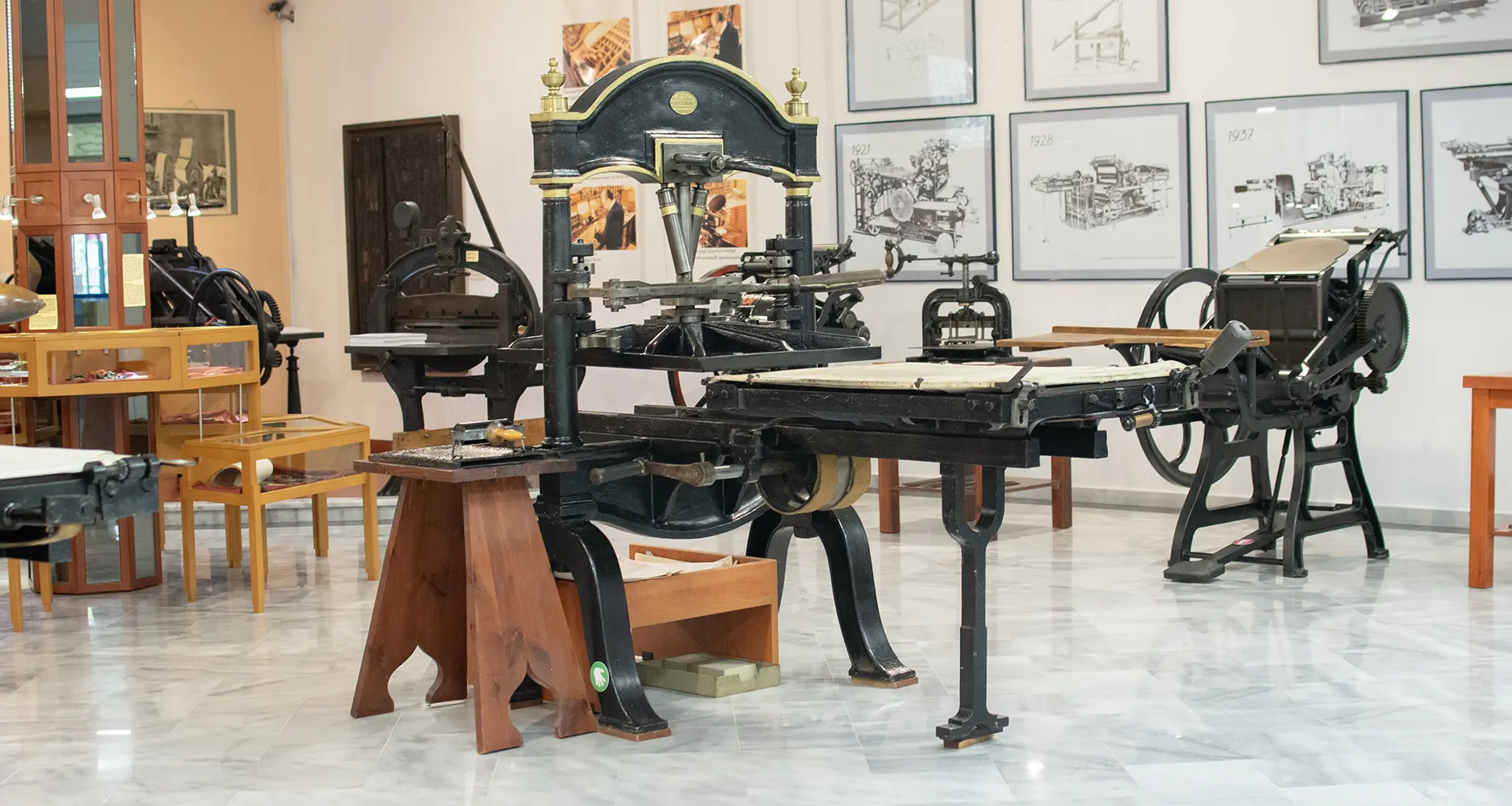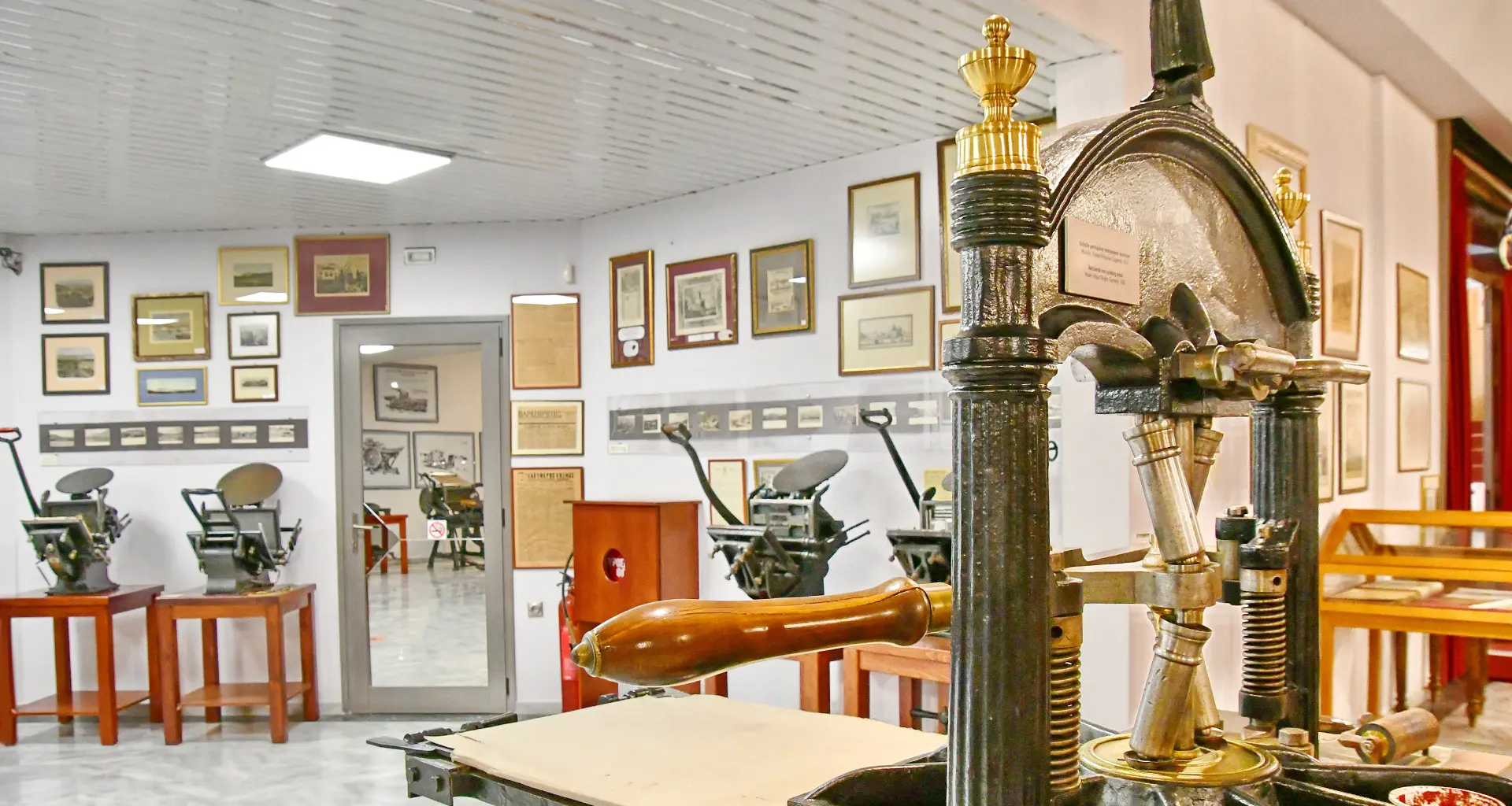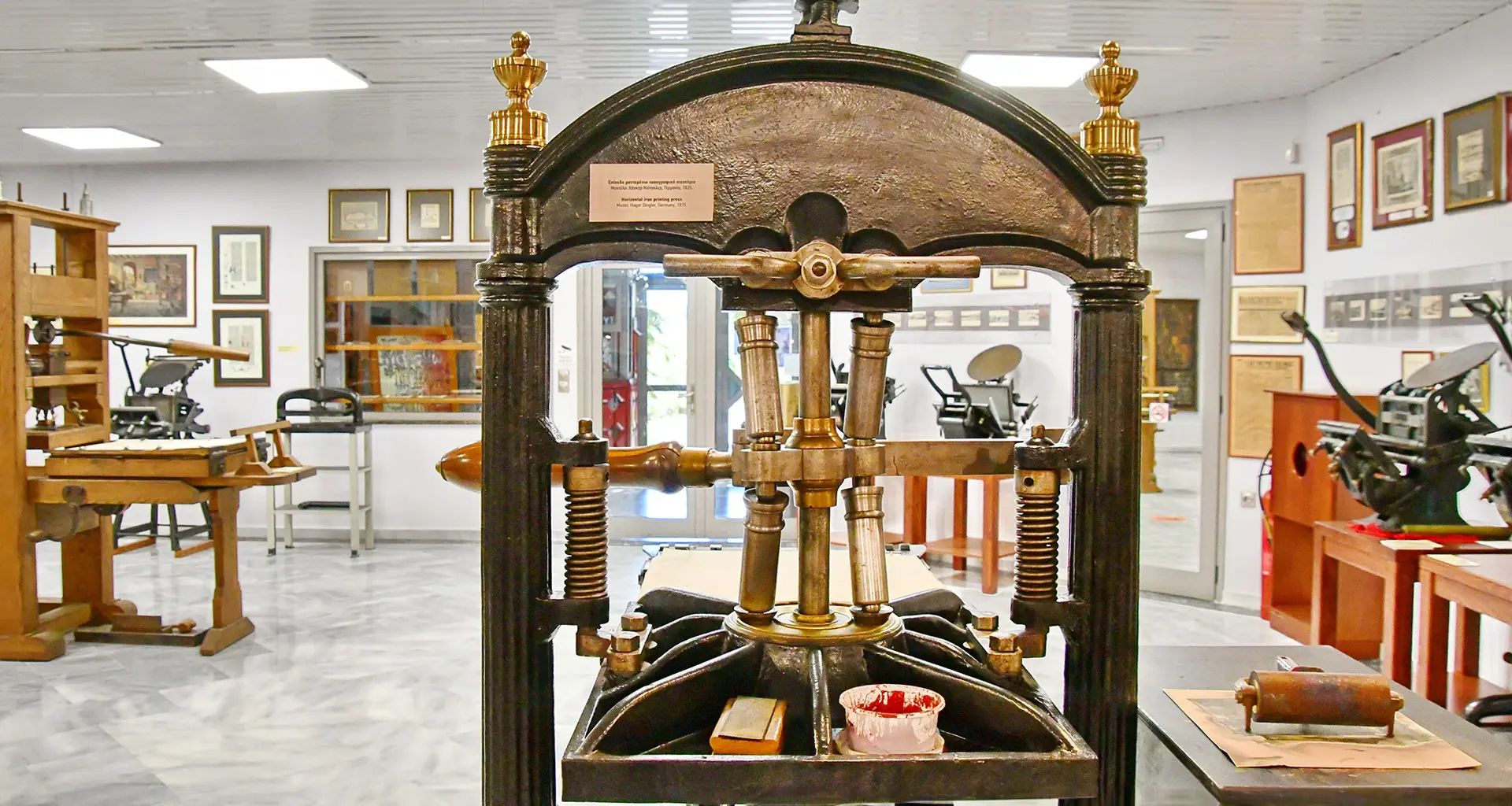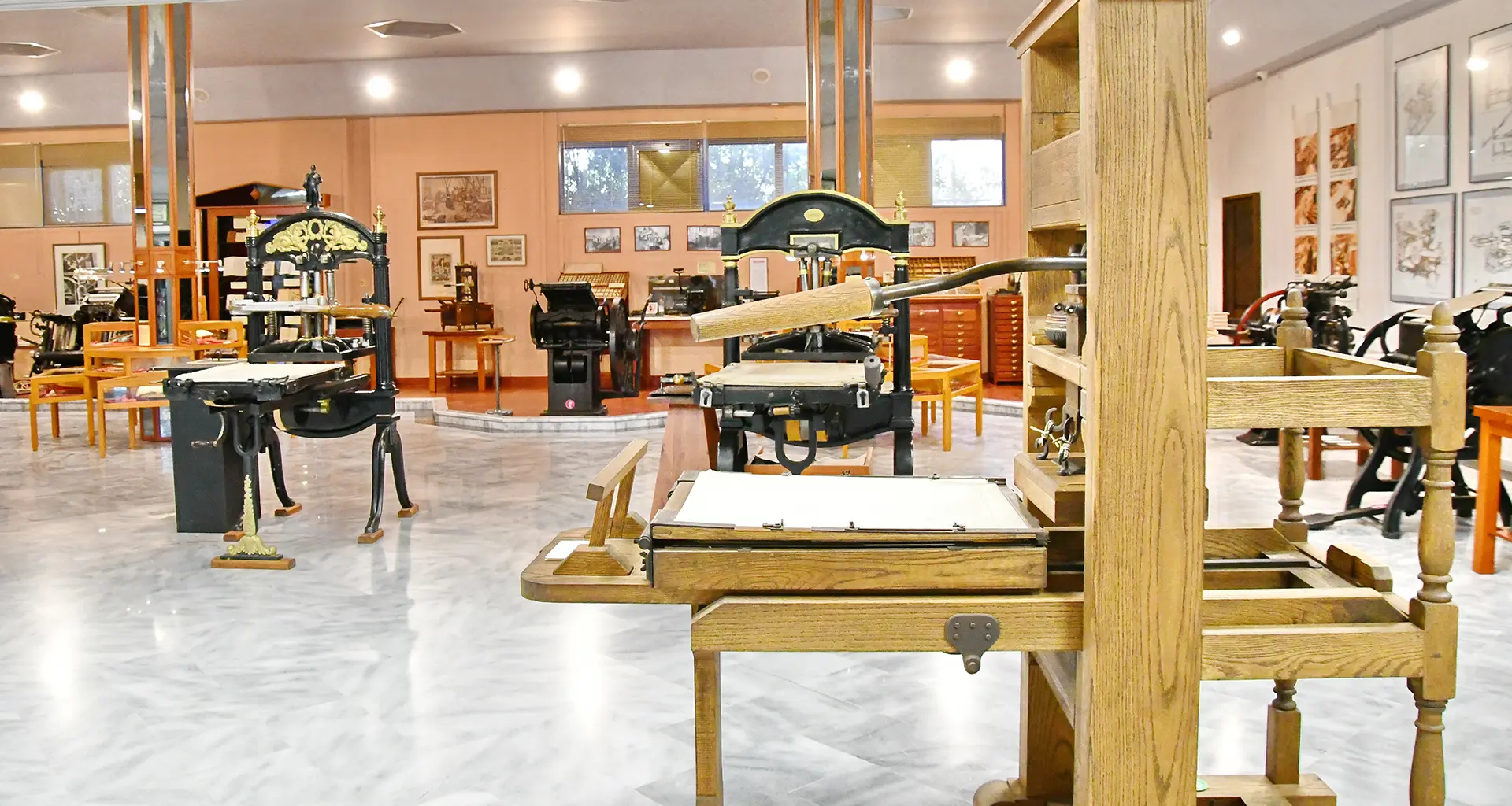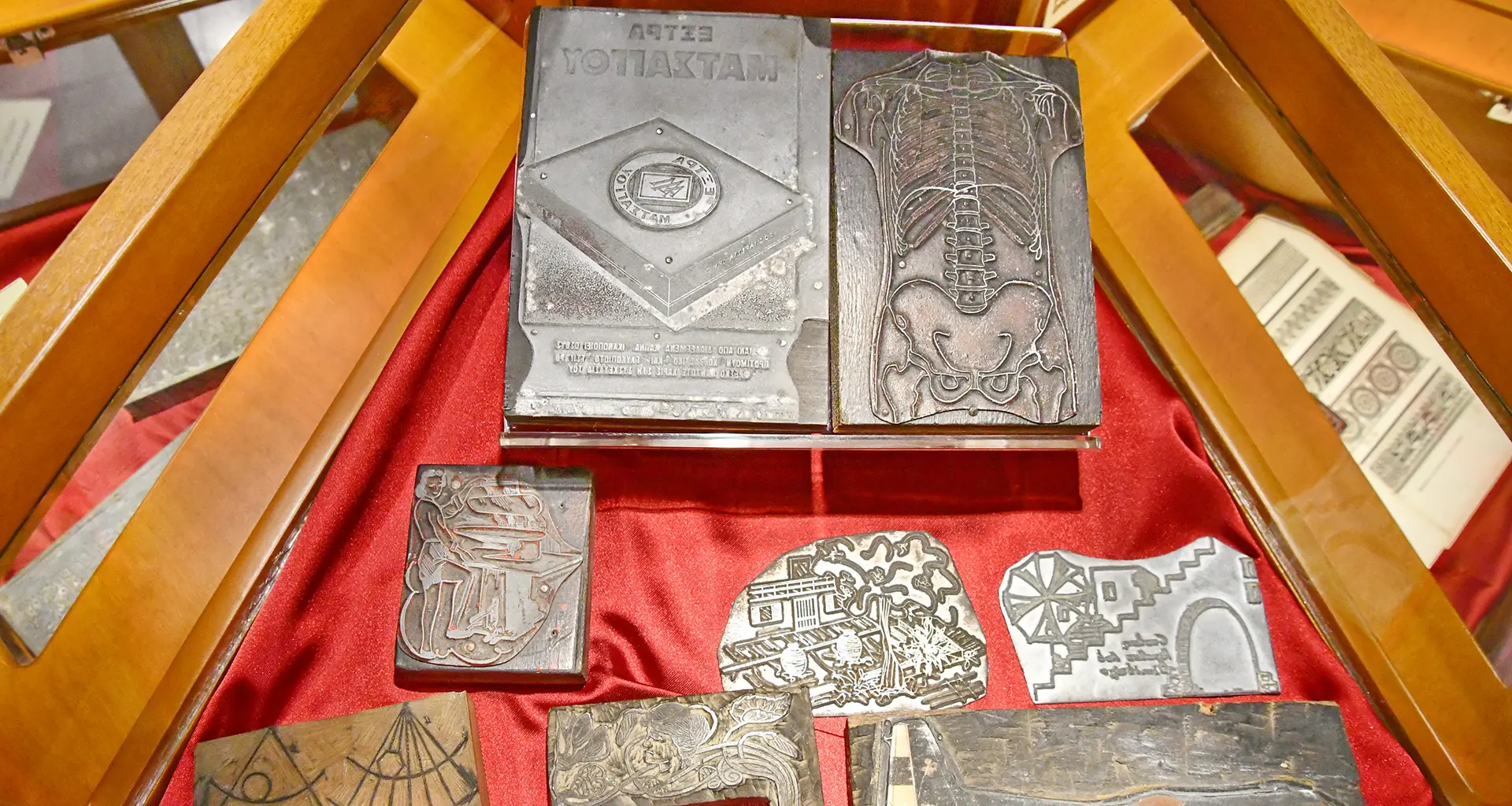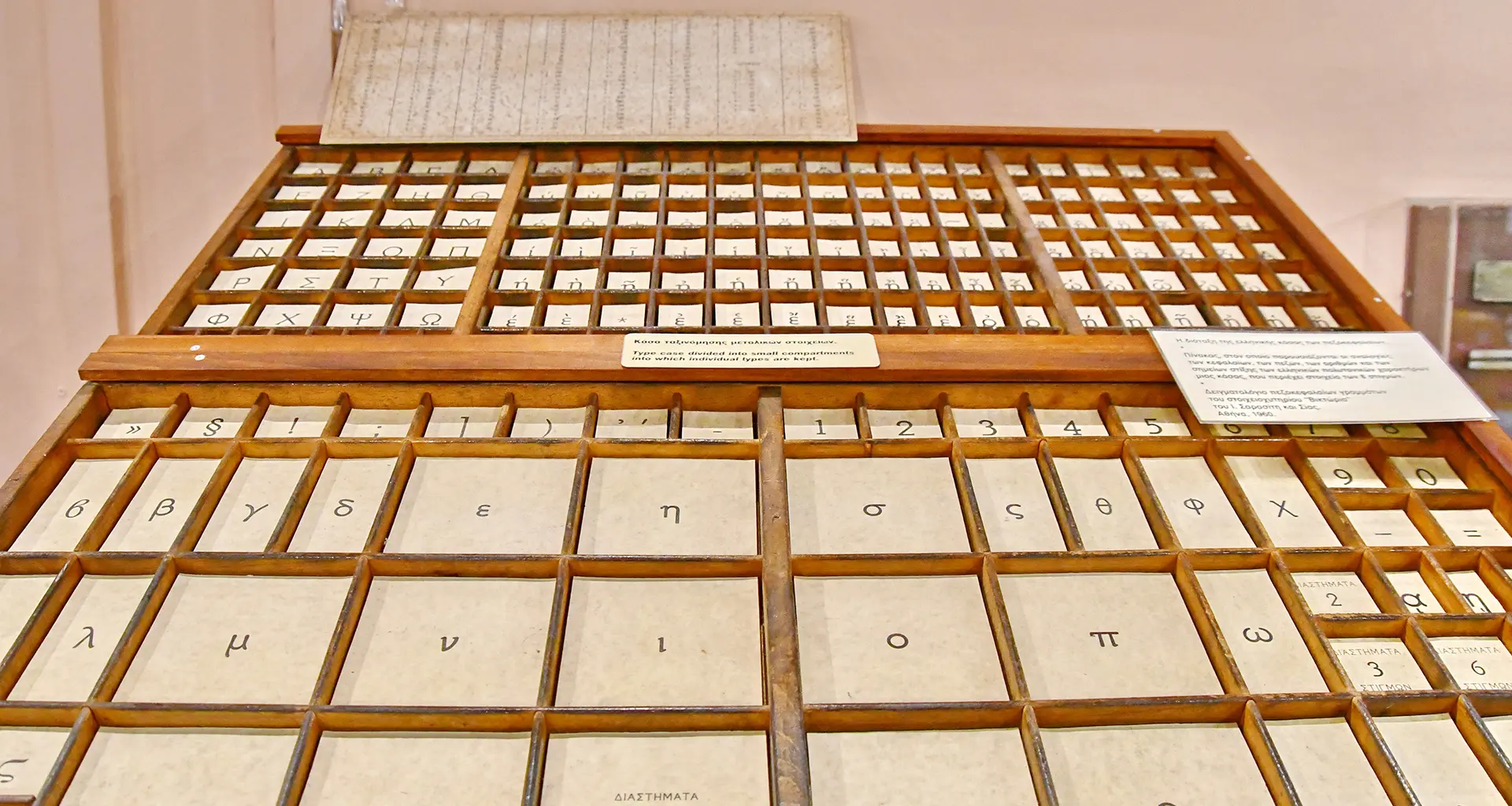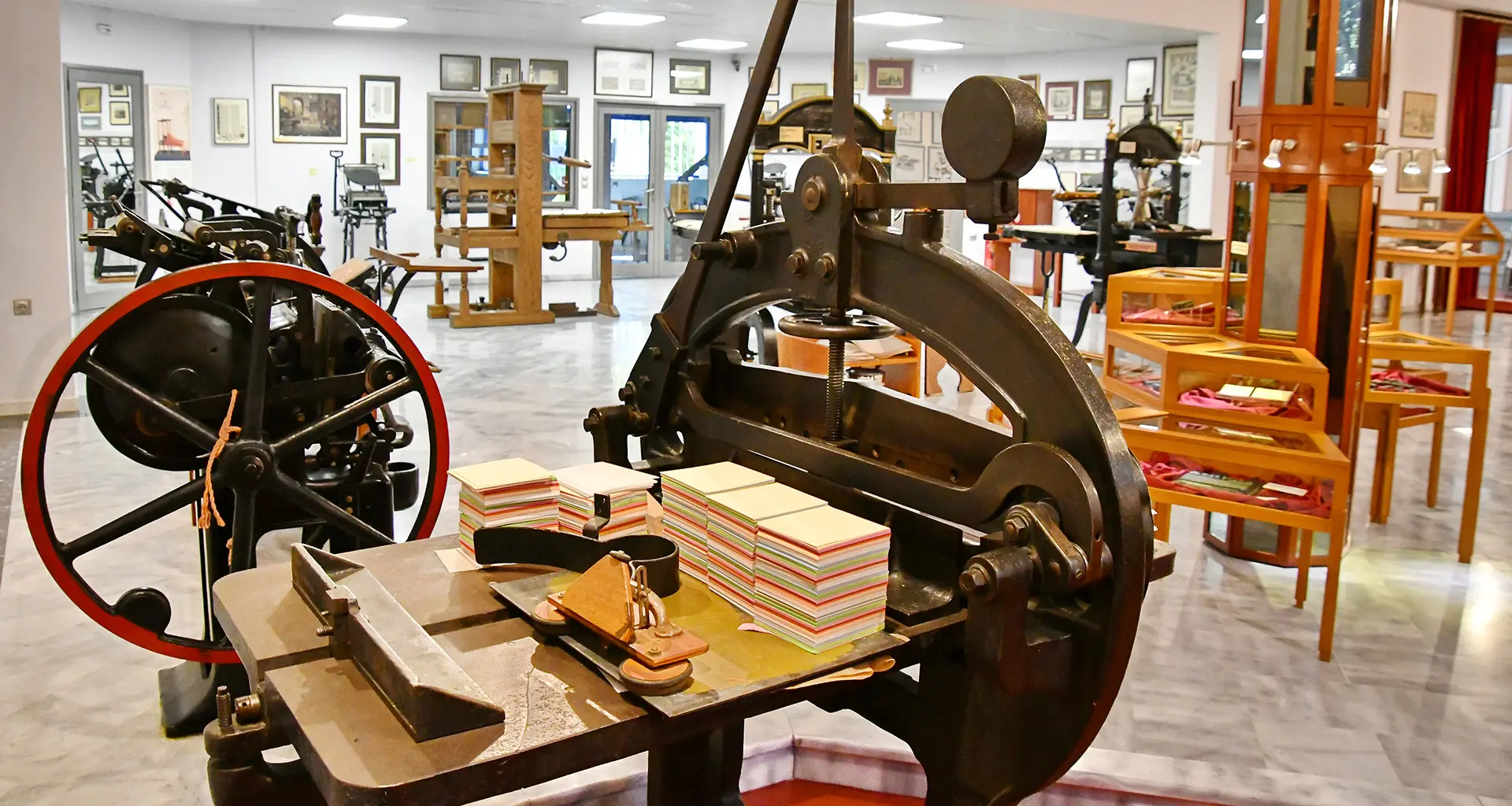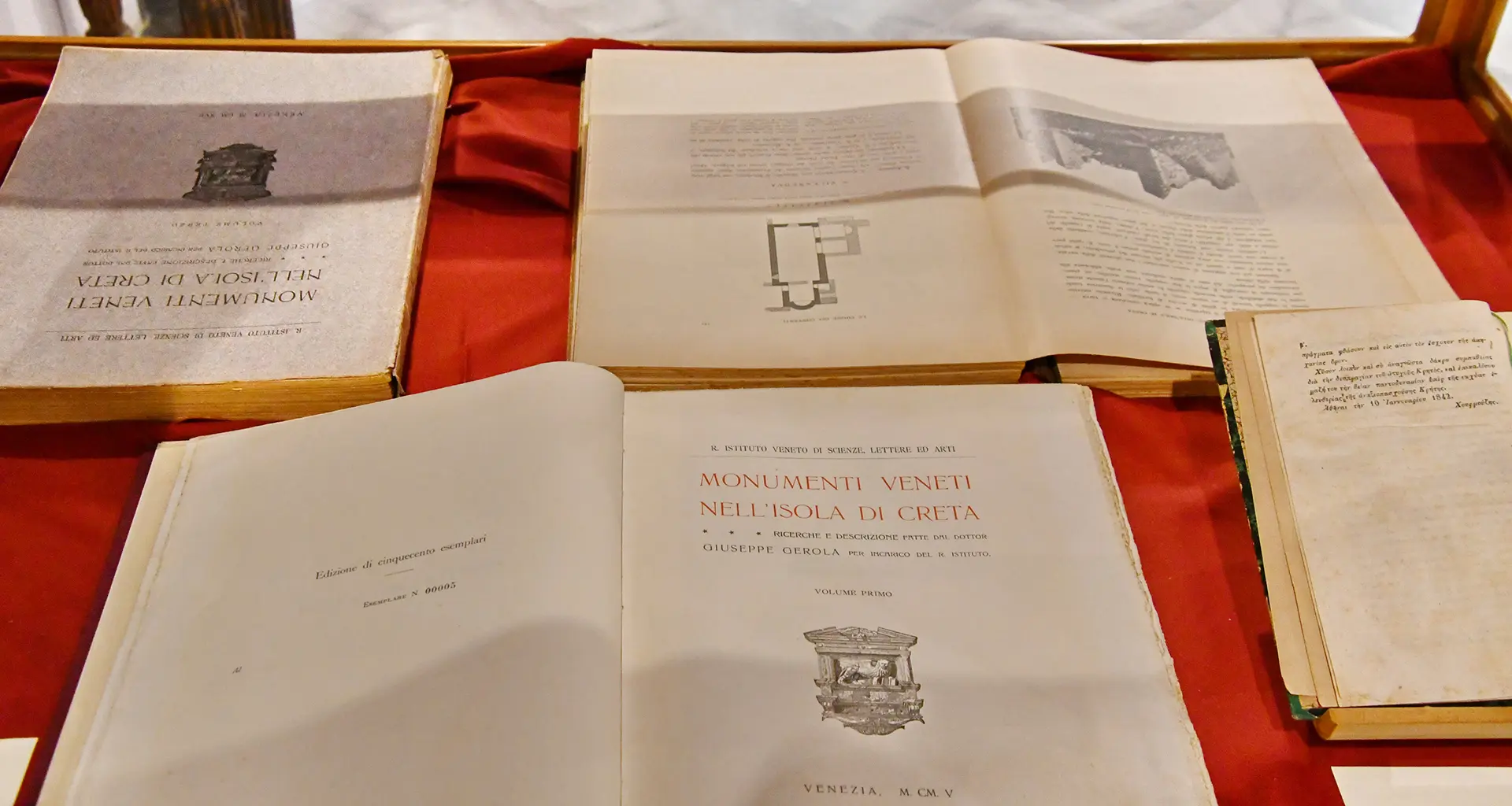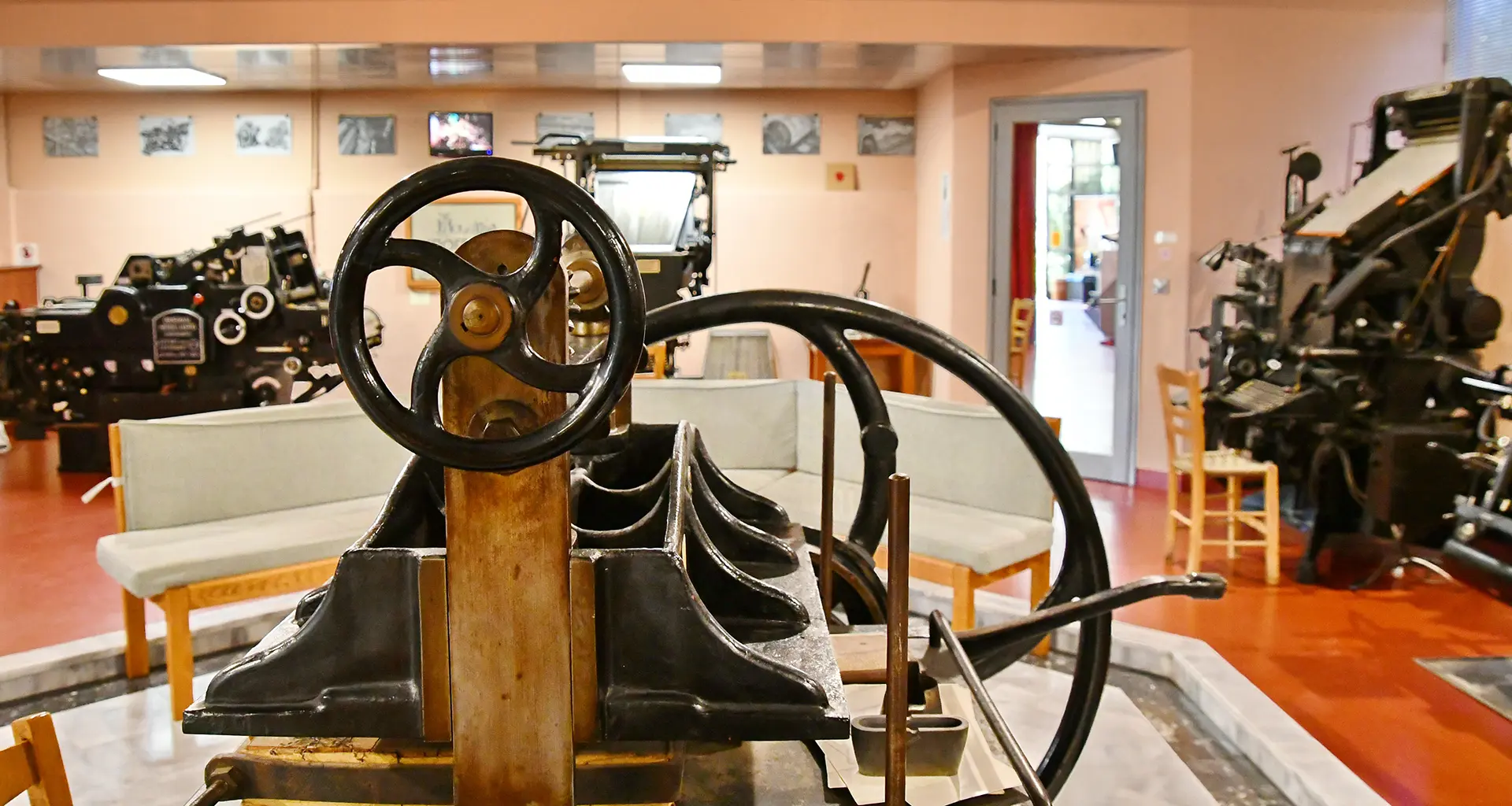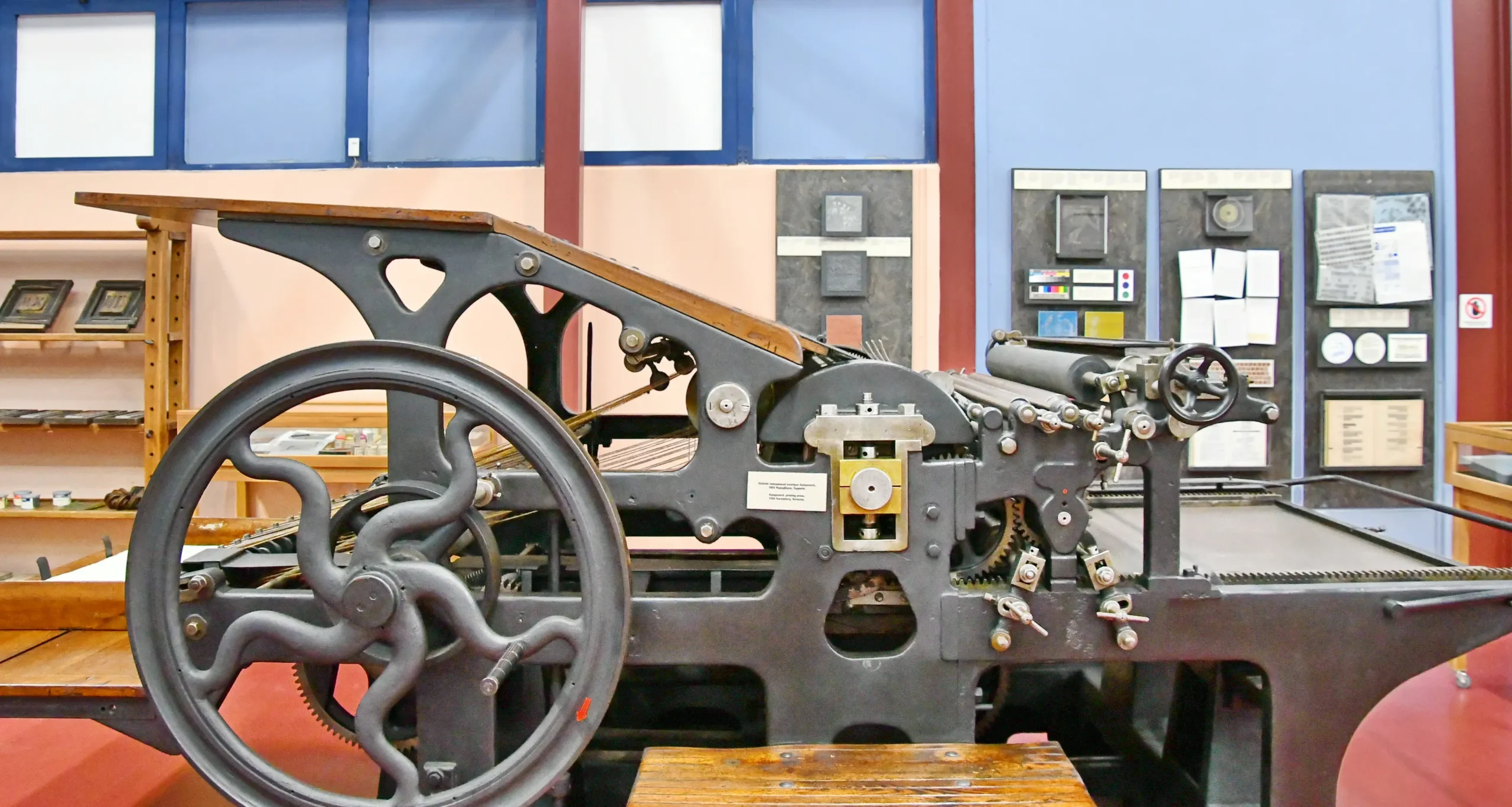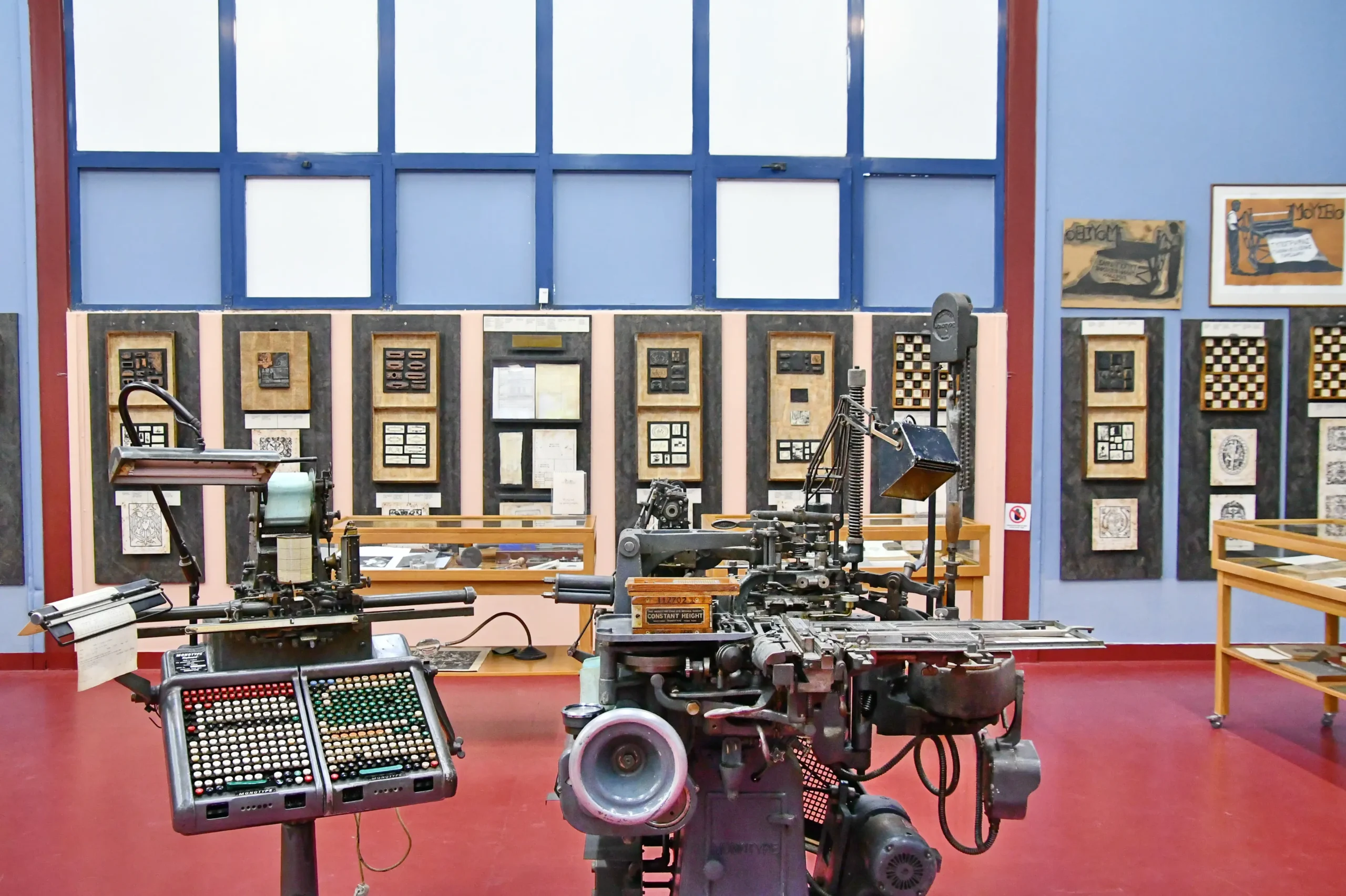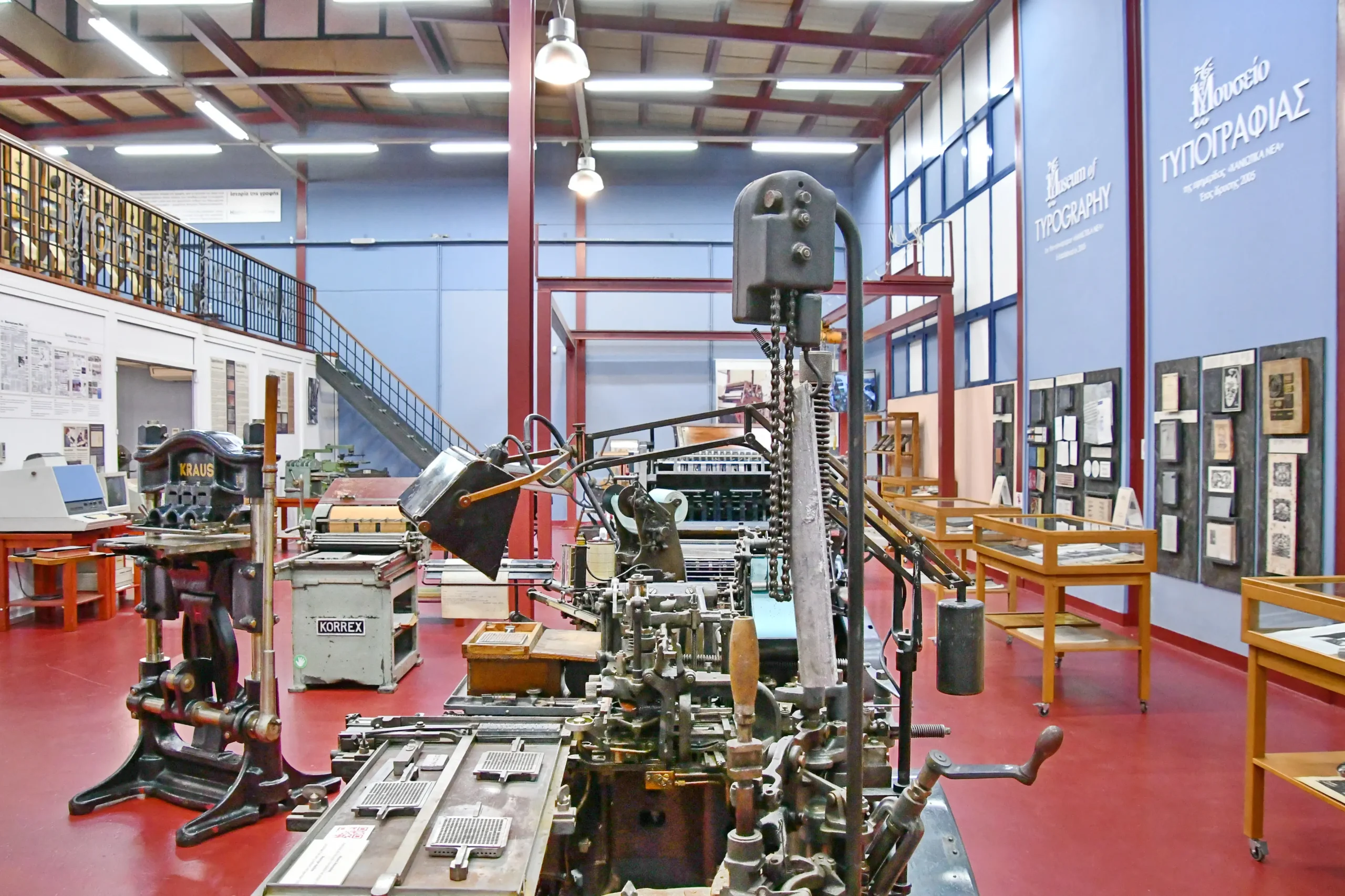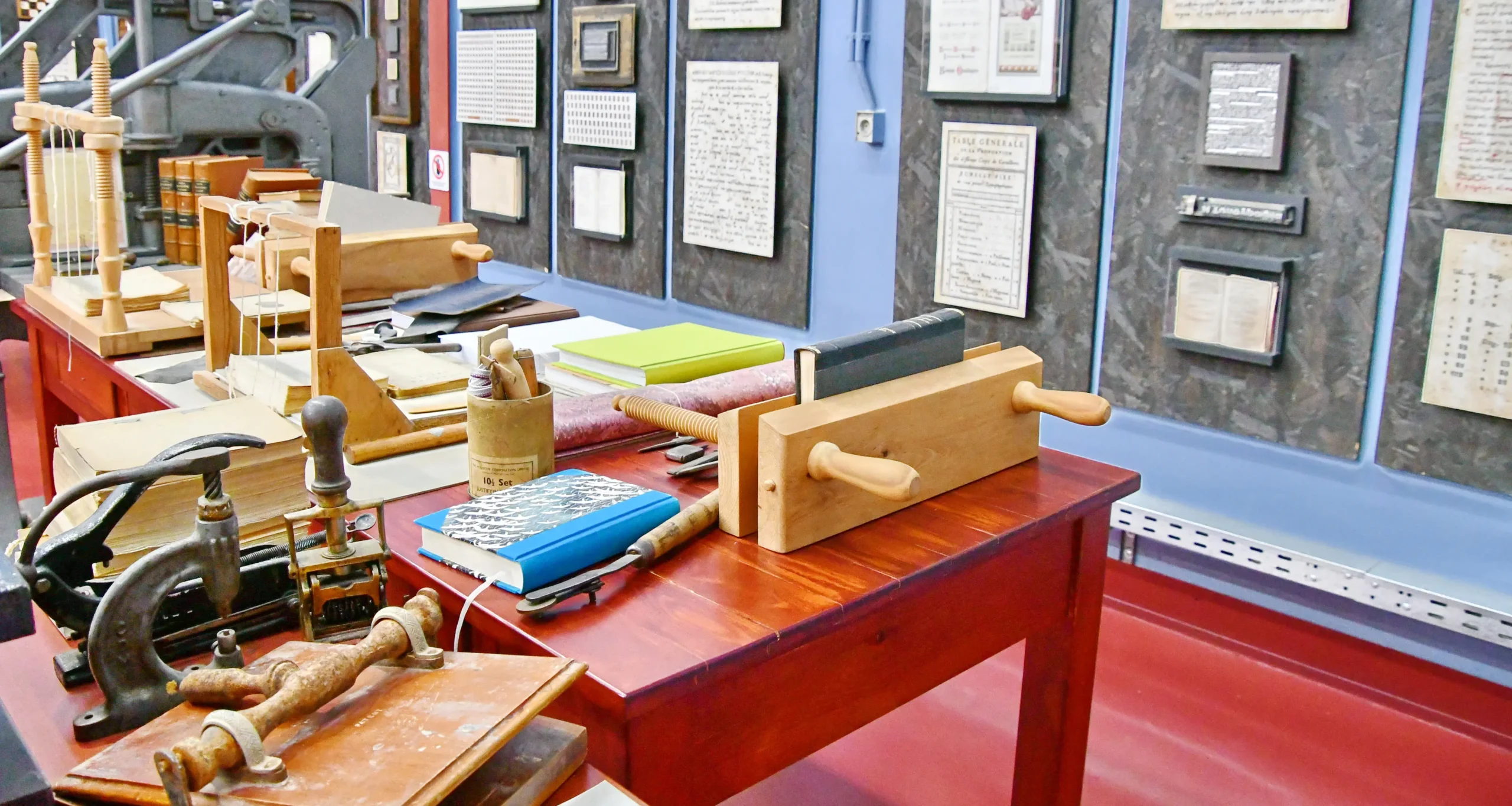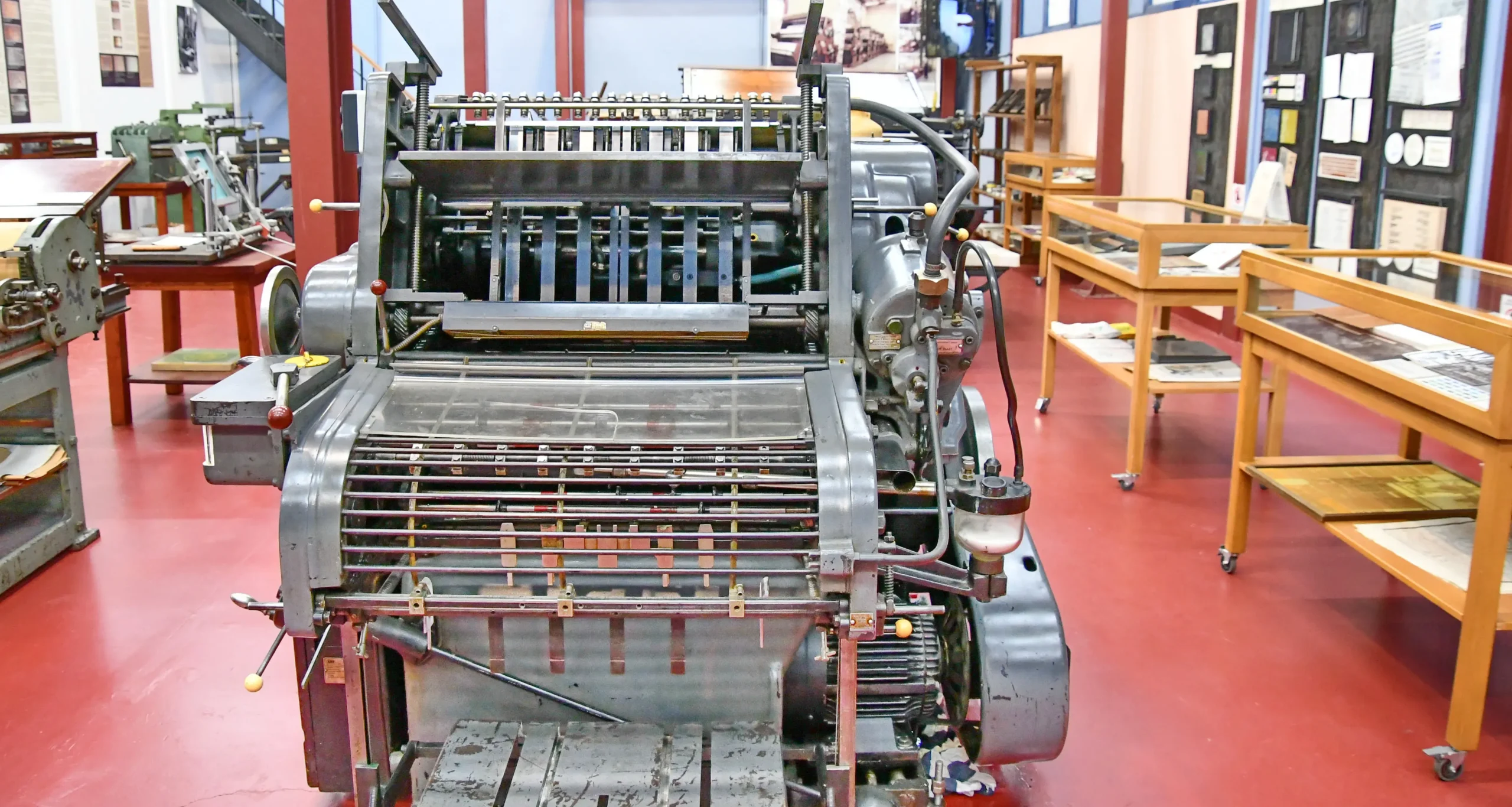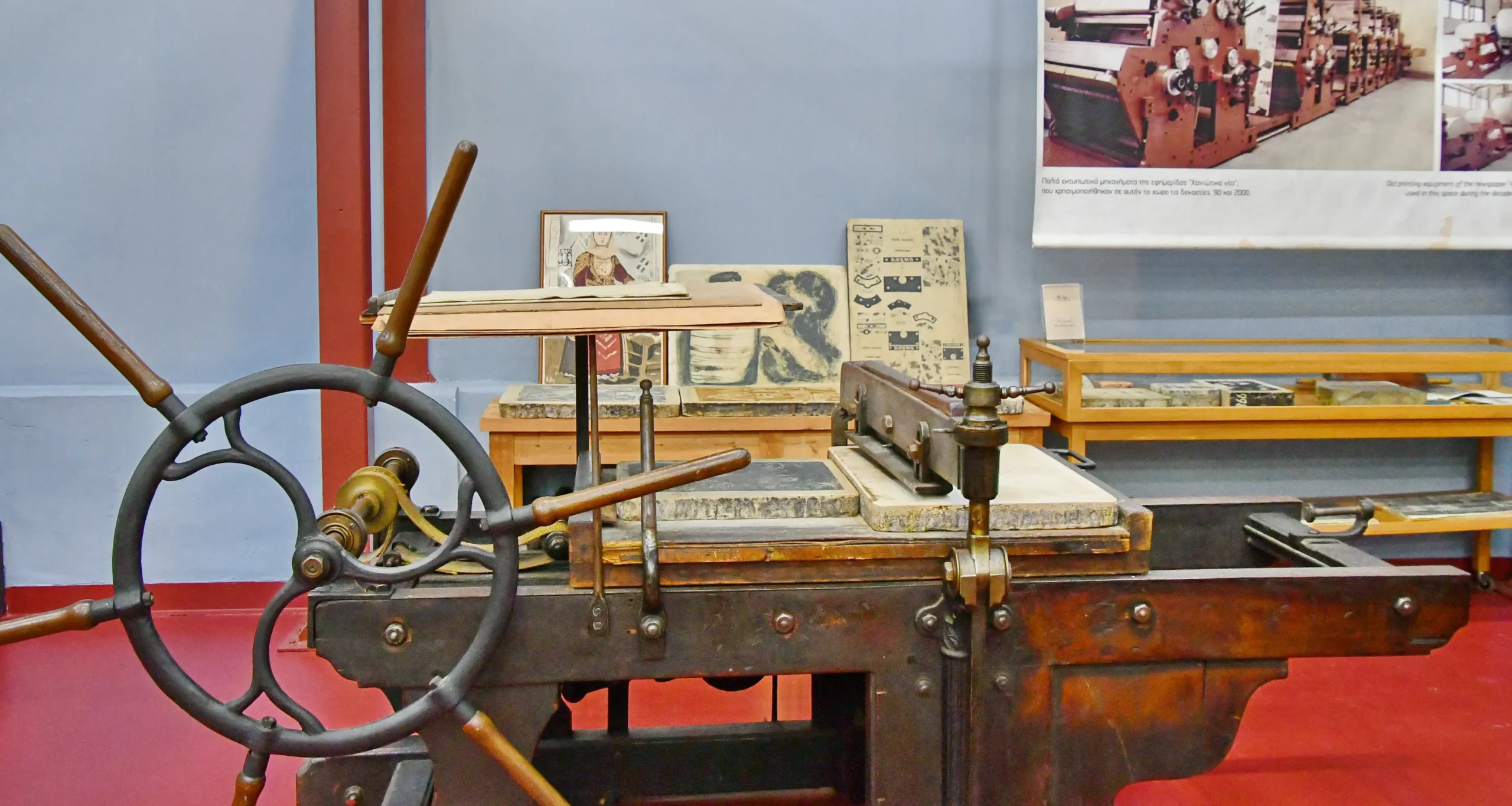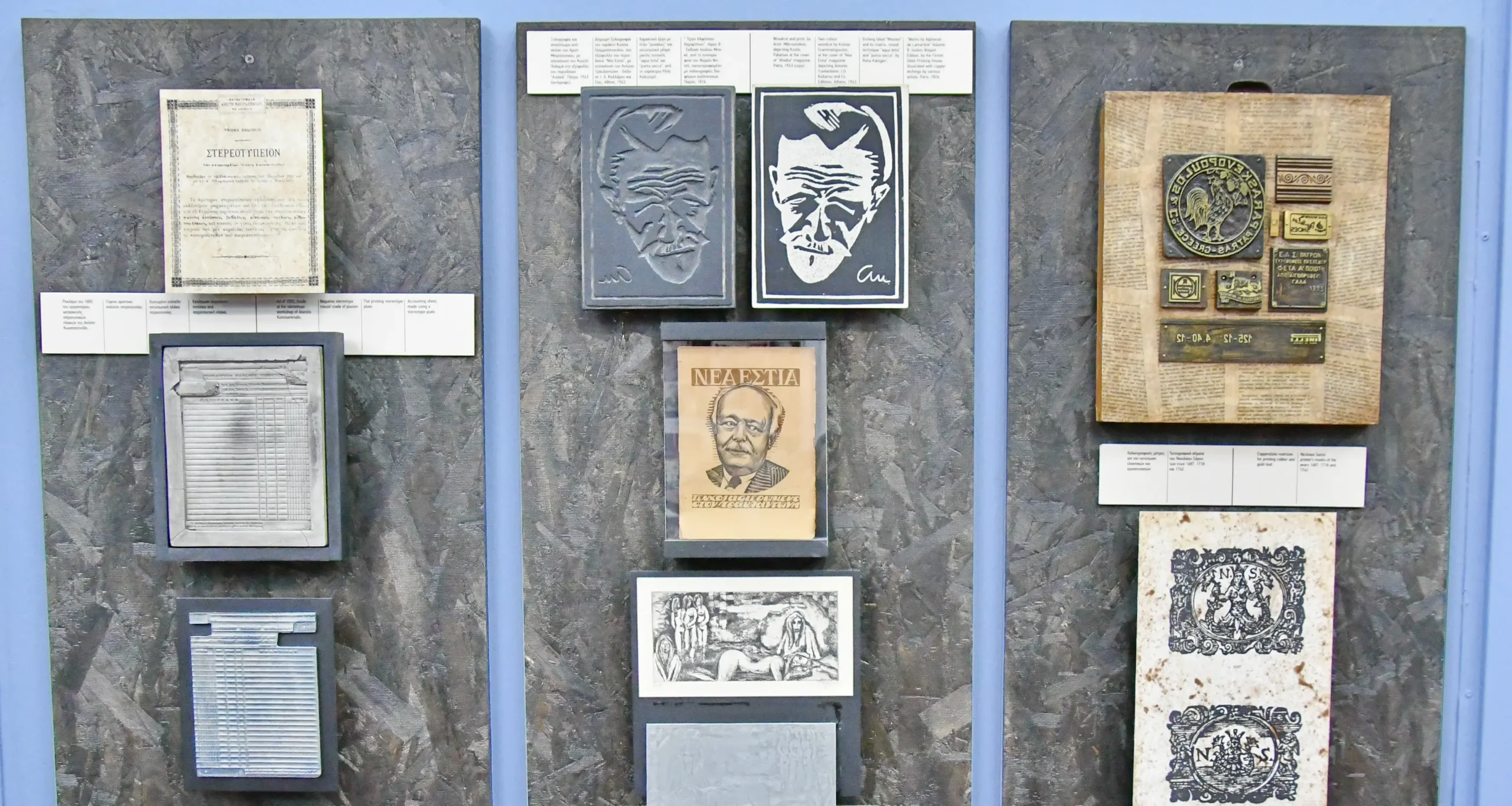02
WING B
Ground floor
This hall is purely industrial, since, until 2008, the old printing presses of the “Chaniotika Nea” newspaper were housed here. Today, the newspaper is being printed in an adjacent building, as described in a short video you will have the opportunity to watch during your tour. The monotype, two large flat printing presses of the 19th century, machines used from time to time for the publication of the newspaper, and traditional stamp making equipment are also on display. Of particular importance is the Hugo Carmine Wien lithographic press, made in Vienna around 1900, which, together with a special display case featuring tools, lithographic plates, as well typical examples of printing, rounds off the presentation of this technique.
There is also a space dedicated to bookbinding, with the necessary workbench and all the machinery, the tools, the handmade paper, the leathers, the bookbinding press that are needed; you will also have the opportunity to watch a video of a bookbinder in action.
Techniques such as xylography, copperplate engraving, lithography, offset, zinc engraving and screen printing are presented in detail in specially designed showcases, in addition to the Braille writing method donated by the “Lighthouse for the Blind of Greece”. There is also a showcase dedicated to paper production.
Around the perimeter of the hall, we can see and experience the evolution of typography through the perspective of the graphic designer-typographer Antonis Papantonopoulos, while the additional hall offers a glimpse of interesting and heterogeneous exhibits, which are currently being studied and researched by the museum, such as the office and the tools that graphic designers of the past used to employ, such as book sewing machines, guillotine knives, gold printing machines, packaging/box cutting machines, etc.

